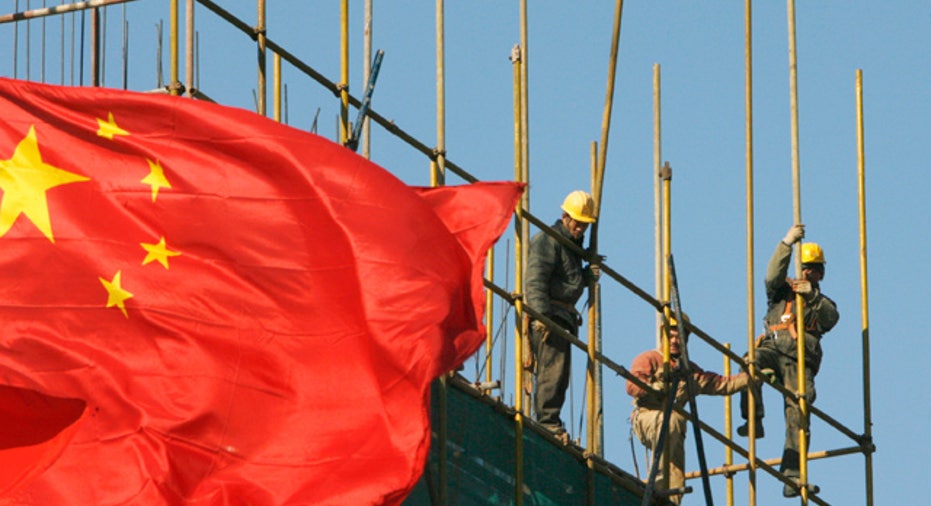China Factory Activity Skids to 9-Month Low

BEIJING – China's factory activity weakened to a nine-month low in June as demand faltered, a preliminary survey showed, heightening the risk of a sharper second quarter slowdown and increasing the heat on the central bank to loosen policy.
China's economy grew at its slowest pace for 13 years in 2012 and so far this year data has been weaker than expected, bringing warnings the country could miss its growth target of 7.5 percent for this year, though possibly not by much.
And as the economy shows signs of faltering, a squeeze in Chinese money markets over the past two weeks has sharply tightened monetary conditions, adding to the pressure on the People's Bank of China to take steps to ease policy.
"Headline activity indicators such as industrial production and fixed asset investment are weak but are not collapsing, while labour market conditions remain tight," said Zhang Zhiwei, economist at Nomura International in Hong Kong.
"We believe the government is committed to tolerating short-term pain to achieve its policy objectives - containing financial risks and secure sustainable growth in the long term."
Nomura sees a 30 percent chance that growth in the second half of this year could be below 7 percent.
The flash HSBC Purchasing Managers' Index fell to 48.3 in June from May's final reading of 49.2, drifting further away from the 50-point level demarcating expansion from contraction. It was the weakest level since September.
The Australian dollar hit a fresh 33-month low after Thursday's data, which fuelled worries about a slowdown in Australia's single biggest export market.
Most of Asia's share markets were down more than 1 percent, with the China data adding to raw nerves struck when Federal Reserve Chairman Ben Bernanke confirmed it would begin reducing its stimulus spending later this year.
The broad Asia ex-Japan index was down 2.8 percent.
FALLING ORDERS
In the PMI survey, compiled by British-based Markit Group Ltd, a sub-index measuring overall new orders dropped to 47.1 in June, the lowest reading in 10 months, suggesting demand is weakening both at home and abroad.
New export orders also weakened further in June, pointing to persistent global headwinds as the U.S. recovery remains patchy, while Europe's economy remains shackled by the debt crisis.
An employment sub-index also eased in June - broadly in line with signs of softening demand for migrant workers in Chinese cities - even though the overall job market is holding up as the government tries to improve social safety nets.
"Manufacturing sectors are weighed down by deteriorating external demand, moderating domestic demand and rising destocking pressures," said Qu Hongbin, chief China economist at HSBC.
"Beijing prefers to use reforms rather than stimulus to sustain growth. While reforms can boost long-term growth prospects, they will have a limited impact in the short-term. As such we expect slightly weaker growth in 2Q."
Many analysts have cut their forecasts for 2013 growth, with Barclays Capital seeing growth of 7.4 percent from 7.9 percent, and HSBC 7.4 percent from 8.2 percent in 2013 and 2014 at 7.4 percent from 8.4 percent.
HARD LANDING UNLIKELY
The chances of a hard landing are small, however.
"The chance of economic growth slipping below 7 percent is quite low, because existing measures are still effective in helping stabilise the economy," said Wang Jin, analyst at Guotai Junan Securities in Shanghai.
"Figures for infrastructure and property investment show the overall demand of the economy is not declining sharply. Under such circumstances, a reform-oriented policy setting will not exacerbate hard-landing risks."
Nevertheless, there are a growing number of voices expecting policy action by the central bank, particularly as monetary conditions tighten. Interbank funding costs surged again on Thursday, with the two shortest-term rates hitting record highs.
"We expect the People's Bank of China to ease monetary conditions shortly," said Dariusz Kowalczyk, senior economist/strategist for Asia ex-Japan at Credit Agricole CIB, in a note.
"We see either an RRR (reserve ratio requirement) cut or large-scale liquidity-boosting open market operations."
But the central bank, which last cut rates in July 2012, is facing a dilemma as it balances the need to support the economy while dealing with property prices rising their fastest pace this year in May and looking increasingly like a bubble.
In addition, the chances of fresh stimulus appear slim given that China's new leaders have adopted a greater tolerance for a slowing economy as they focus on economic reforms.
Government economists have told Reuters that the new leadership of President Xi Jinping and Premier Li Keqiang would tolerate quarterly growth slipping as far as 7 percent year-on-year before looking to jumpstart the economy.
Li was quoted by state media as saying on Tuesday that the economy remains generally stable and the pace of expansion is still within "the reasonable range".
The Financial News, which is run by the central bank, said in a commentary on Wednesday that the chances of a near-term interest-rate cut remain low amid fears over capital outflows.
The HSBC flash PMI comes ahead of the final reading due on July 1 along with the Chinese government's official PMI.



















